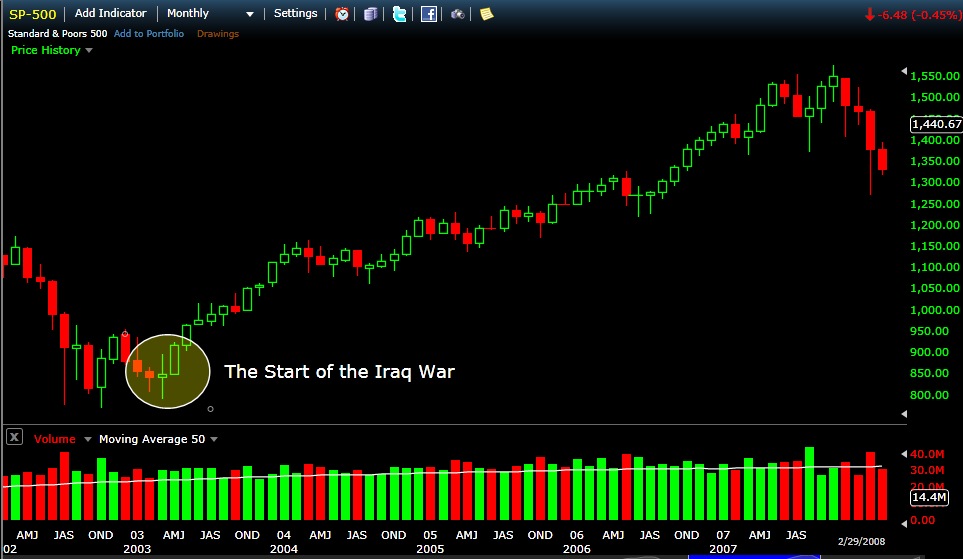People recall the beginning of the Iraq War in the Spring of 2003 in many ways but few at the time thought of it as the bullish sign post it turned out to be.
Essentially the SP500 doubled from the start of the war to the peak 5.5 years later.

That’s the way it is with the best buy signals. Almost no one thinks of them that way because public sentiment is skewed in such a way as to not allow for the interpretation of data constructively.
Remember – thinking and feeling are intertwined – call it confirmation bias or whatever but sentiment shapes how we construe.
At the time in fact, the majority was spinning the news of war much more bearishly and as one more negative in a world already drowning in negatives.
Last week, Fidelity reported that more than half of its 1.6 Trillion dollars in AUM was made up of bond and money market assets.
Bond and money market assets at Boston-based Fidelity now total $848.9 billion, more than half of the company’s $1.6 trillion in managed assets. Ford O’Neil, a top bond manager at Fidelity, underscored the milestone on Wednesday during a media presentation in Boston.The rise of bond and money market funds, including institutional assets, is a remarkable turn of events for Fidelity. The company built an empire in the 1980s and 1990s on stock funds and star stockpickers like Peter Lynch. Fidelity’s stock mutual funds held $761 billion at the end of June.
Let’s think about this for a sec. The public hates the market so much that for the first time everFidelity has less of its AUM in equities than in bond and money market funds.
Furthermore, no one is talking about the epic level of dry powder this data point implies.
Despite 2012′s 15% $SPX rally, capital loss remains the primary emotional motivator of the investing public now.
I have been writing about this for months and the Fidelity data is the investors’ behavioral expression of the fear.
And it feels characterological too. What I mean by that is that “fear of loss” appears to be deeply embedded in the public’s personality and as such resistant to change.
But it is not resistant to situational changes.
If and when the $SPX makes new highs (and its less than 10% from ATH’s), the predominant fear will shift hard and fast from fear of losing to fear of missing out.
Then, this epic level of dry powder suggested by the Fidelity news will light up equities and fuel momentum.
No comments:
Post a Comment